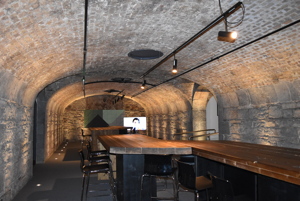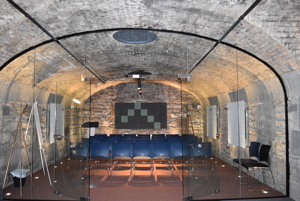Cooling Older Buildings

Renovating an older building for modern times can present challenges when considering air conditioning but today’s technology can provide the answer, says Neil Bilton.
Older buildings often don’t have the space to install the ductwork needed for traditional cooling systems. Electrical systems may not be sufficient to handle the load required by modern equipment. While upgrading an entire wiring system can be expensive, finding the space for air conditioning equipment is more of a problem.
In such structures, the heating system typically consisted of a boiler and radiators and there may well be a lack of ductwork or space for its installation. That’s why consultants need to consider alternative air conditioning systems for renovating older buildings. Building in the ductwork for a traditional air conditioning system can be done, but it may require creating holes in the fabric of the building, and even lowering ceiling heights to make room for the ductwork. In an historic space, architects and consultants are likely to want to preserve the original finishes.
VRF systems are one of the best modern air conditioning options for older properties. Like traditional central air conditioning systems used for residential, hospitality and light commercial spaces, VRF systems have an outdoor condenser unit connected to indoor air handling units which do not require ductwork. Instead, refrigerant pipework connects multiple smaller indoor fan coil units installed throughout the space.
This advanced VRF system technology can provide heating and cooling, and even both simultaneously to different areas within the space. The use of multiple indoor units provides the ability to create zones that can be individually controlled to aid efficiency – no need to heat or cool a room that is unoccupied. What’s more, these VRF systems are very quiet and energy-efficient because the variable-speed compressor runs only at the capacity needed for the current conditions.
 |
|
The CHQ Vaults in Dublin: a challenging cooling project |
For example, the latest Panasonic VRF solutions can be less obtrusive in the long term and during the installation process. There is no need for ducts in the ceiling and installation can have little impact on the day to day activities and operation of a building. Furthermore, the units can be controlled remotely via a mobile device or PC to help monitor energy efficiency and avoid costly bills.
Split systems for smaller areas can be installed that only require a refrigerant and power line to connect them and thus alleviating the need for moving walls and ceilings and taking up less much needed space.
Correct sizing
When specifying a VRF system, appropriate system-sizing will ensure optimum performance. Oversizing will result in an inefficient system which also affects humidity levels – critical in making the space feel cooler. In addition, a system should have accurate load calculations and be correctly optimised for the space required to ensure energy efficiency. Regular maintenance of a system can help deliver the longevity and efficiency of a system such as removing dirt and debris from the units and regular checks on the pipe work.
In the past, a lack of pipe length has caused issues for installations but now, with today’s systems capable of operating with extended piping lengths as standard (pipe runs are possible up to 100m with many Panasonic VRF units), this problem is not now an issue.
A great example of an installation in an historic property is the listed CHQ Vaults in Dublin. The unusual architecture and historical importance of the vaults presented some interesting challenges for this installation, which were overcome thanks to the flexibility of the system.
The CHQ Vaults, situated in Dublin’s historical docklands, were originally used to store tobacco and whiskey in the 1800’s. Many years later, during the 2000’s, the building was refitted to accommodate retail units, when the space became a shopping haven. Now, in its most recent transformation, the vaults have regenerated into a commercial hub of offices, restaurants and bars.
Going underground
The client, Dogpatch Labs, wanted to create an innovative, tech co-working space utilising a 13,500ft² area within the vaults. The interior design incorporated original features within the space for an eclectic working environment. When it came to heating and cooling, they called in specialist air conditioning and ventilation experts Crystal Air to install a system that would both work with the structure of the building and effectively ventilate this old, underground space.
 |
|
The cooling system works with the structure of this older building |
The vaulted brickwork structure of the building combined with its listed status meant that Crystal Air already had several challenges to overcome. Firstly, the air conditioning system had to be easily removable in case future tenants wanted to fit an alternative solution. Secondly, none of the installation work could damage the bricks and mortar of the original vaults, and nothing could be attached to the historical vaulted ceiling.
The system also had to provide consistent cool, clean air in a large office space of over 150 desks, to counteract the underground atmosphere.
“Panasonic provided the best solution for us to overcome the several unique challenges that the installation at Dogpatch Labs presented,” said Don Hoban, business development manager of Crystal Air. “The installation took six weeks and the finished result not only looks great but also provides an economical and sustainable solution for the client.”
Neil Bilton is head of key accounts for Panasonic Heating & Cooling







